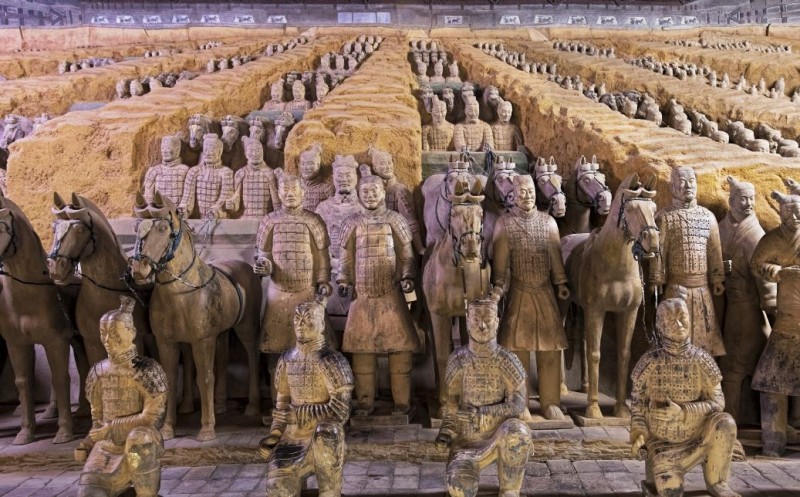
Introduction
The Terracotta Army is an awe-inspiring archaeological discovery in China that showcases the grandeur and power of the country's first emperor, Qin Shi Huang. Unearthed near the ancient capital of Xi'an, this massive collection of life-sized clay soldiers has captured the imagination of people around the world. In this article, we will delve into the historical significance, construction, and preservation efforts of the Terracotta Army, shedding light on this remarkable testament to China's ancient civilization.
1. The Rise of Emperor Qin Shi Huang: Uniting China
Emperor Qin Shi Huang ascended to the throne at the age of 13 and embarked on a mission to unify the warring states of ancient China. Through astute political maneuvering and military conquests, he succeeded in establishing the Qin Dynasty, which marked the birth of a centralized Chinese empire. Qin Shi Huang's ambition extended beyond his mortal life, leading to the creation of the Terracotta Army.
2. The Purpose and Significance of the Terracotta Army
2.1 Honoring the Emperor in the Afterlife
One of the main purposes of the Terracotta Army was to accompany Qin Shi Huang in the afterlife. It was believed that by creating this vast army, the emperor would have a formidable force to protect him and continue his reign beyond death. The clay soldiers were intricately crafted with great attention to detail, representing an assortment of warriors, archers, charioteers, and officers.
2.2 Architectural Marvel and Symbol of Imperial Power
The construction of the Terracotta Army showcases the advanced engineering skills and artistic prowess of ancient China. Each soldier was individually made, featuring unique facial expressions, hairstyles, and armor. The sheer scale of the army, with thousands of soldiers arranged in battle formation, stands as a testament to the emperor's wealth, power, and determination.
3. Discovery and Excavation
3.1 Chance Discovery by Local Farmers
The discovery of the Terracotta Army happened serendipitously in 1974 when local farmers stumbled upon fragments of terracotta while digging a well. Recognizing the historical significance of their findings, they alerted archaeologists, leading to the excavation of one of the world's most remarkable archaeological sites.
3.2 Immense Archaeological Undertaking
The excavation of the Terracotta Army has been a monumental task. Archaeologists have meticulously unearthed three main pits, each housing different formations of soldiers, as well as chariots, horses, and weapons. The preservation efforts involve delicate excavation techniques, preservation of the fragile terracotta statues, and ongoing research to unravel the mysteries surrounding the army.
4. Preservation and Research Efforts
Preserving the Terracotta Army poses significant challenges due to the fragility of the clay soldiers. Exposure to air and light can cause rapid deterioration, leading to color fading and structural damage. To combat this, conservationists employ specialized techniques such as controlled environments, advanced imaging technology, and meticulous restoration methods. Ongoing research aims to uncover more about the creation process, the pigments used, and the historical context of the army.
5. The Cultural Impact of the Terracotta Army
5.1 UNESCO World Heritage Site
In 1987, the Terracotta Army was designated as a UNESCO World Heritage Site. This recognition emphasizes the immense cultural and historical value of this archaeological wonder, solidifying its place as a global treasure.
5.2 Tourism and Economic Boost
The discovery of the Terracotta Army has brought significant tourism and economic benefits to the region. Visitors from all corners of the world flock to Xi'an to witness this remarkable feat of ancient craftsmanship, boosting local businesses and fostering cultural exchange.
Conclusion
The Terracotta Army stands as an extraordinary testament to the ambition, craftsmanship, and vision of China's first emperor, Qin Shi Huang. This remarkable archaeological discovery continues to captivate people's imaginations, offering a glimpse into the rich history and cultural heritage of ancient China.
India's Space Program Soars, ISRO Inspires Scientific Advancement